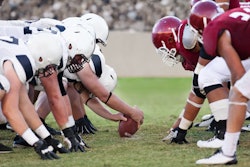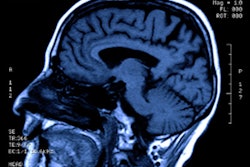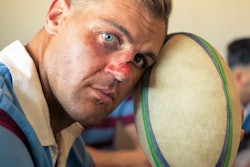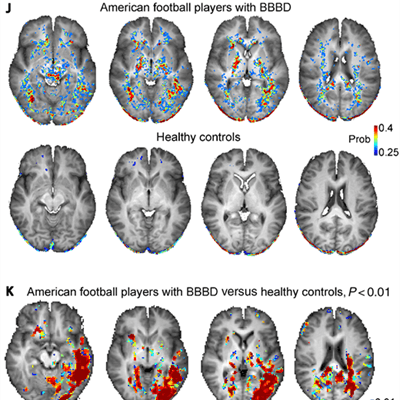
Israeli researchers have discovered they can determine whether football players have chronic traumatic encephalopathy (CTE), a neurodegenerative disease caused by repeated head injuries, by measuring leakage of the blood-brain barrier (BBB) using MRI.
Up to now, it was presumed CTE could only be diagnosed through brain tissue analysis postmortem. However, a new study in Brain, a Journal of Neurology (June 2020, Vol. 143:6, pp. 1826-1842) by Ben-Gurion University of the Negev researchers shows CTE can be detected via brain imaging techniques and analytical methods.
The study included 42 Israelis who play amateur American football in the Israeli Football League. The control group consisted of 27 athletes practicing a noncontact sport and 26 nonathletes.
MRI scans were also performed on 51 patients with malignant brain tumors, ischemic stroke, or traumatic brain injury. The researchers used the National Football League (NFL) sideline concussion assessment tool to document history of previous head injuries, including concussions, as well as symptoms assessment and Standardized Assessment of Concussion tests.
Led by Dr. Ronel Veksler, the research team developed a modified dynamic contrast-enhanced-MRI (DCE-MRI) protocol and analytical methods to investigate vascular pathology and BBB disorder associated with repeated mild traumatic brain injury in American football players.
They used DCE-MRI to distinguish between fast and slow leakage through the pathological BBB and showed that localized, specific post-traumatic vascular pathology may persist for months in a subset of players.
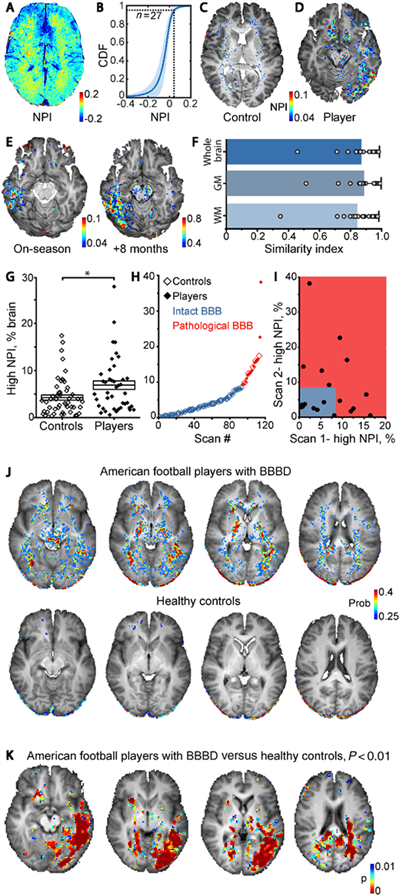 This DCE-MRI scan reveals persistent blood-brain barrier disorder in American football players. Using brain imaging techniques and analytical methods, researchers can determine whether football players have CTE by measuring leakage of the blood-brain barrier. Image courtesy of Ben-Gurion University.
This DCE-MRI scan reveals persistent blood-brain barrier disorder in American football players. Using brain imaging techniques and analytical methods, researchers can determine whether football players have CTE by measuring leakage of the blood-brain barrier. Image courtesy of Ben-Gurion University.A few players who did not complain of severe symptoms also showed a leaky BBB, which suggests DCE-MRI should be used in conjunction with symptom questionnaires before return to play is approved, according to the researchers.
The football players were three times more likely to show a leaky BBB than controls, as BBB disorder was detected in a subgroup (27.4%) of players. The individual variability may explain the wide range of cognitive deficits and neuropsychiatric impairments observed in players, the authors found.
Future studies are recommended to determine the prevalence and spatial-temporal characteristics of BBB disorder in professional football players and/or retired players with and without CTE clinical signs and symptoms. Any differences may improve the understanding of the effects of impact strength and frequency, age of onset, player's skill, and extent of vascular injury, the authors added.




